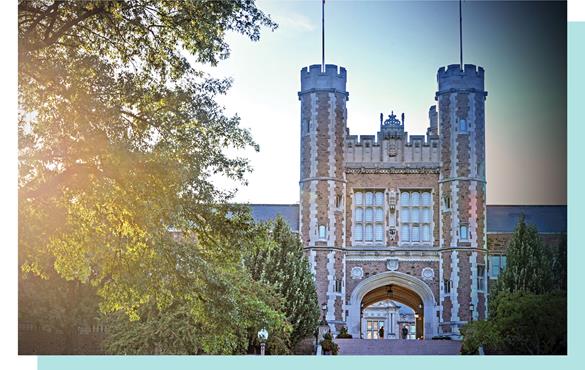Society of Engineering Science conference to draw more than 800 scientists to WashU
The Society of Engineering Science conference returns to WashU after 50 years featuring programming across the physical and life sciences, mathematics and engineering

The McKelvey School of Engineering at Washington University in St. Louis will host more than 800 scientists and engineers from more than 20 countries Oct. 13-15 for the 56th Annual Society of Engineering Science (SES) conference. It marks 50 years since the last time the conference was held at WashU when Chancellor Thomas H. Eliot welcomed SES to campus in 1969.
"Over the past half century, this conference has grown to become one of the world's pre-eminent meetings in the field of engineering science," said Guy Genin, Harold and Kathleen Faught Professor of Mechanical Engineering and co-chair of the conference. "This is an exciting opportunity to take stock of how both the field and our research programs at WashU have developed over the past 50 years."
The conference features programming across the physical and life sciences, mathematics and engineering.
"Many of the most distinguished researchers in these fields are coming to this conference," said Philip Bayly, the Lilyan & E. Lisle Hughes Professor of Mechanical Engineering and chair of the Department of Mechanical Engineering & Materials Science at WashU and chair of the local organizing committee. "This conference will enable us to highlight the depth of our strengths in these areas and will give us a great opportunity to share with our colleagues throughout the field the new facilities in the East End and particularly Jubel Hall."
Among the several symposia offered at the two-and-a-half-day conference is a symposium on fracture and fatigue in memory of the late Paul Paris, a longtime professor of mechanical engineering at WashU who was well-known for developing the fracture mechanics approach to fatigue. This includes the Paris law, in which Paris identified and predicted how the growth of small cracks leads to "fatigue" failure in metals structures that are stressed repeatedly.
"Paul [Paris] taught the world's first fracture mechanics course," Genin said. "A great many of the students who learned from him have become leaders in the field of engineering science."
"This symposium in honor of Paris is a huge, landmark event," Bayly said. "His law has driven aircraft structural design in the 20th and 21st centuries."
Other symposia include:
- The Second Annual U.S. National Symposium on Mechanobiology sponsored in part by the National Science Foundation's Science and Technology Center for Engineering MechanoBiology (CEMB);
- A first-of-its-kind poster session at the SES conference that seeks to disseminate the entire range of research funded by the NSF Mechanics of Materials and Structures program;
- An NSF-sponsored networking lunch that seeks to provide mentorship and broaden participation in the conference by researchers from diverse career stages and backgrounds; and
- Information sessions and one-on-one meetings with NSF program officers;
- A late-breaking research poster track in Jubel Hall.
Attendees can attend more than 900 talks covering topics such as engineering in life sciences; fluid mechanics and transport phenomena; granular materials and geomechanics; mechanics and physics of materials; nanomechanics; structural mechanics, metamaterials and manufacturing; and frontiers in engineering science. Medals will be awarded to six scientists in recognition for their work, and a student paper competition will take place.
Genin is co-chairing the conference with Nadia Lapusta, professor of mechanical engineering and geophysics at the California Institute of Technology, and Vivek Shenoy, the Eduardo D. Glandt President's Distinguished Professor at the University of Pennsylvania. The program committee is co-chaired by Spencer Lake, associate professor of mechanical engineering & materials science, and Sinan Keten, June and Donald Brewer Professor and associate professor of civil & environmental engineering at Northwestern University.
The mission of SES, which was founded in 1963, is to promote the free exchange of information on all aspects of engineering science and to provide a forum for discussion, education and recognition of the talents of the engineering science community.
The U.S. National Mechanobiology symposium further establishes our leadership position in mechanobiology," Bayly said. "The conference as a whole has been an opportunity for our remarkable staff and faculty to work together in a way that shows the community the quality and depth in all aspects of our university."



